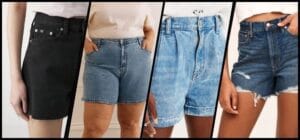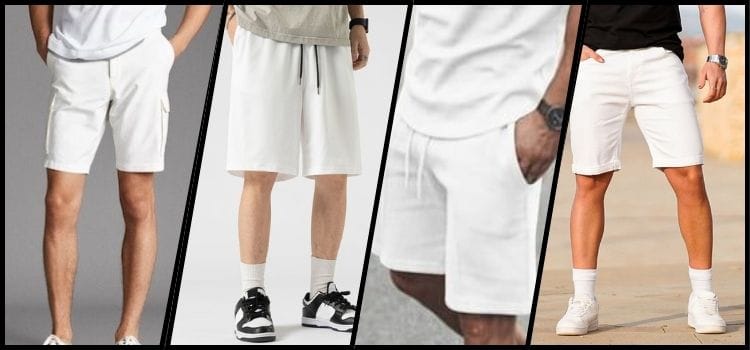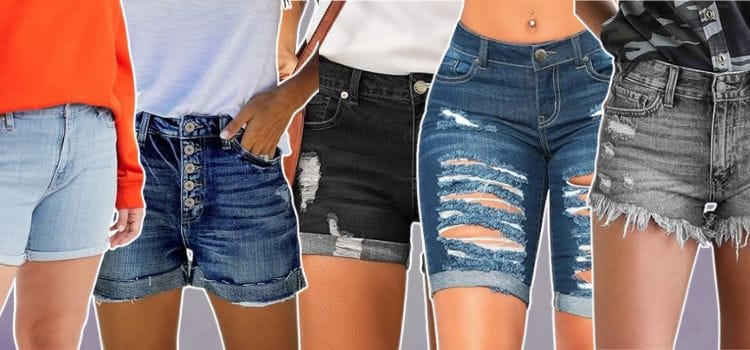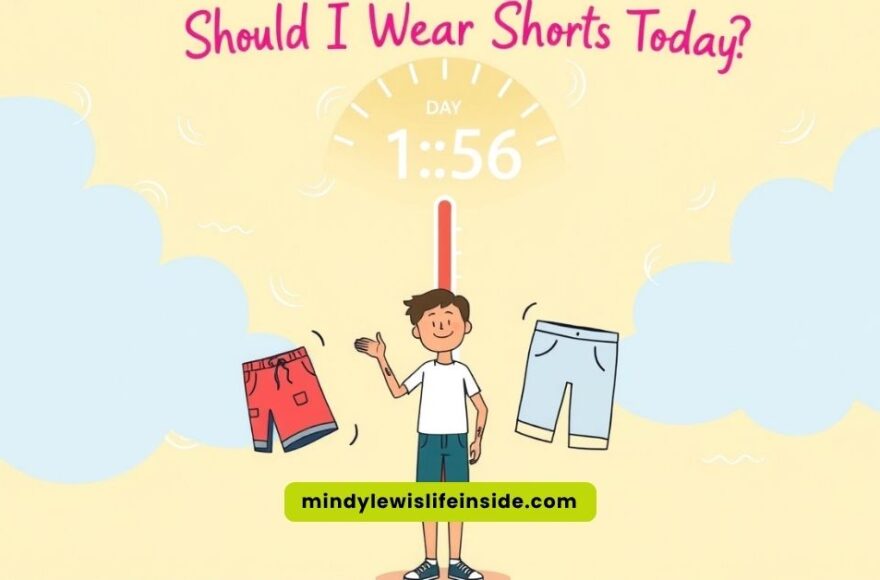Do You Wear Underwear with Lined Shorts? Find Out Here

As an Amazon Associate, I earn from qualifying purchases
When you invest in quality athletic wear, you want to get the most out of it. A common question that pops up, especially with running shorts, is whether you’re supposed to wear underwear underneath.
It seems like a simple question, but the answer involves comfort, performance, and hygiene. If you’ve ever found yourself wondering about this in the locker room, you’re not alone.
This blog post will clear up the confusion and help you decide what works best for your workout routine.
Understanding Lined Shorts: Purpose and Design
Lined shorts are a staple in modern athletic wear for a reason. Their design is centered around functionality, with an integrated inner layer that serves as built-in support. This feature is intended to manage moisture and reduce chafing, essentially eliminating the need for a separate pair of underwear.
While the design is intentional, whether you take advantage of it is a matter of personal preference. Understanding the purpose of the liner can help you make an informed choice. Let’s look closer at what makes these shorts unique and how the liner contributes to your comfort.
What Makes Lined Shorts Different from Regular Shorts?
The most significant difference between lined shorts and other types of shorts is the built-in liner. Think about traditional boardshorts or casual shorts; they are typically just a single layer of fabric with no internal structure. This means you need to wear something underneath for support and coverage.
On the other hand, lined shorts come with an integrated brief or compression-style layer. This liner is often made from moisture-wicking materials like polyester or nylon blends. It’s designed to fit snugly against your skin, offering a level of support that regular shorts simply can’t provide.
This built-in system is what sets them apart, creating an all-in-one solution for physical activity. The liner’s purpose is to function as your underwear, providing security and comfort so you can move freely without needing an extra garment.
The Role of the Built-In Liner in Comfort and Support
The main purpose of the built-in liner is to enhance your comfort and provide necessary support during exercise. The liner acts much like a pair of high-quality compression shorts or athletic briefs that are seamlessly integrated into the shorts themselves. This design helps keep everything in place, reducing uncomfortable movement and the risk of chafing during repetitive motions like running or cycling.
Furthermore, the materials used in liners are specifically chosen for performance. They wick sweat away from your body, which helps you stay dry and cool. The fit of the liner is crucial; it should be supportive without being restrictive. A well-designed liner moves with your body, offering a secure feel that boosts confidence and focus.
Ultimately, this built-in feature is engineered to do the job of underwear, but more effectively for an active context. By managing moisture and providing stability, the liner helps you perform at your best without any distractions.
Downsides and Considerations of Wearing Underwear with Lined Shorts
While some people might feel more secure wearing additional underwear, doing so can be counterproductive. The liner in your running shorts is designed to be the only layer you need against your skin. Adding an extra layer often introduces issues that the liner was made to prevent, such as discomfort and reduced performance.
There are also potential hygiene concerns to think about. An extra garment can trap heat and moisture, which might not be ideal during an intense workout. Before you decide to double up, it’s worth exploring the potential drawbacks.
Potential Discomfort and Hygiene Issues
One of the main reasons experts suggest skipping underwear with lined shorts is the potential for discomfort. An extra layer of fabric can easily bunch up or shift during movement, leading to chafing and irritation. This completely defeats the anti-chafing properties of the liner.
Moreover, wearing two layers can create hygiene issues. The liner is made of moisture-wicking fabric to pull sweat away, but adding another layer, especially cotton underwear, can trap that moisture against your skin. This creates a warm, damp environment that can encourage bacterial growth.
Potential downsides of doubling up include:
- Increased Chafing: Fabric rubbing against fabric and skin.
- Overheating: Two layers trap more heat than one.
- Moisture Buildup: The underwear can absorb sweat, negating the liner’s wicking ability.
- Bunching and Shifting: The extra layer can become uncomfortable and restrictive.
Impact on Performance and Breathability
Your athletic shorts are engineered for peak performance, and that includes their breathability. Liners made from synthetic materials like nylon blends are designed to let air circulate and wick moisture away, keeping you cool and dry. When you add a layer of underwear, especially one made from cotton, you block this process.
This trapped moisture can make you feel heavy and waterlogged, which can negatively impact your performance. The liner can’t do its job effectively if there’s another garment in the way. This is why many athletes choose to go commando—it allows the shorts to function as intended.
To see the difference clearly, consider how each choice affects key performance factors.
| Feature | Lined Shorts Only | Lined Shorts with Underwear |
|---|---|---|
| Moisture Wicking | Excellent; liner pulls sweat directly from skin. | Optimal: allows for full range of motion. |
| Breathability | High; air circulates freely through the liner. | Low; extra layer reduces airflow and traps heat. |
| Comfort | High; no bunching or shifting. | Poor; underwear traps moisture against the skin. |
| Performance | Optimal: allows for a full range of motion. | Compromised; can feel heavy and uncomfortable. |
Beginner’s Guide: How to Decide if You Should Wear Underwear with Lined Shorts
Deciding whether to add an extra layer under your lined shorts can feel confusing, but it doesn’t have to be. The choice ultimately comes down to your personal preference and what makes you feel most comfortable and confident during outdoor activities or gym sessions. There’s no single right answer for everyone.
To make the best decision for you, it helps to follow a few simple steps. By considering your activity, testing for comfort, and understanding the hygiene involved, you can figure out whether to embrace the liner or stick with your underwear.
What You’ll Need Before Getting Started
Before you make a decision, the most important thing you’ll need is a quality pair of lined shorts. Not all athletic wear is created equal, so finding the right pair is the perfect starting point. When choosing between different types of shorts, pay close attention to the liner itself.
Some gym shorts have a brief-style liner, while others feature a longer, compression-style liner. The material and fit will significantly impact your comfort. If you are new to this style, it might be helpful to try on a few different pairs to see what you like.
When shopping for lined shorts, look for:
- Moisture-wicking material: Fabrics like polyester or spandex blends are ideal.
- A comfortable fit: The liner should be snug but not uncomfortably tight.
- High-quality seams: Flatlock seams are best to prevent chafing.
- Good reviews: See what other people say about the comfort and durability.
Step 1: Consider the Activity and Liner Type
The type of activity you’re doing plays a big role in this decision. For high-impact activities like running, the support from a compression liner can be a huge benefit. In this case, wearing the running shorts as intended—without an extra layer—will allow the liner to provide maximum stability and prevent chafing.
For lower-impact workouts or casual wear, the need for intense compression might be less critical. If your shorts have a looser, brief-style liner, you might find that adding a thin pair of athletic underwear provides a feeling of security you prefer. It’s all about matching the gear to the demand of the movement.
Think about what you need most from your shorts. Is it support, freedom of movement, or just coverage? Answering that question will help you determine whether the built-in liner is sufficient on its own for the task at hand.
Step 2: Test for Comfort and Fit
The best way to know what works for you is to test it out. Your personal preference is the most important factor. Try wearing your lined shorts on a short jog or during a workout at home, first without any underwear and then with your usual boxer shorts or briefs. Pay attention to how each option feels.
Does the extra layer cause bunching? Do you feel more or less supported? The fit of the liner is key here. If the built-in compression shorts feel secure and comfortable on their own, you may have your answer. If the liner feels too loose or you simply miss the familiar feel of underwear, then wearing an extra layer might be your preference.
There is no right or wrong, only what provides you with the most comfort. Some people love the freedom of going commando in their athletic shorts, while others prefer the traditional layering they’re used to.
Step 3: Hygiene and Washing Tips
If you decide to go without underwear, proper hygiene is non-negotiable. Since the liner is directly against your skin and absorbs sweat and moisture, you must treat your lined shorts like underwear. This means they need washing after every single use to prevent the buildup of bacteria and odors.
Letting sweaty shorts sit in your gym bag is a recipe for unpleasant smells and potential skin irritation. Always follow the care instructions on the label to preserve the integrity of the performance fabric, which is often a polyester blend.
For best results when washing your lined shorts:
- Wash them immediately after your workout.
- Use a cold water cycle to protect the fabric’s elasticity.
- Avoid using fabric softeners, as they can clog the pores of moisture-wicking materials and reduce their effectiveness.
- Air dry your shorts whenever possible to maintain their shape and function.
Conclusion
In conclusion, the choice of whether to wear underwear with lined shorts ultimately comes down to personal preference and specific activities. Lined shorts offer comfort and support thanks to their built-in liners, but they can also present potential discomfort for some individuals.
By considering factors such as the activity you’ll be engaging in and testing the fit, you can make an informed decision that suits your needs. Remember, hygiene and comfort are key. If you’re still unsure or have questions about wearing lined shorts, feel free to reach out for more personalized advice or tips!
Frequently Asked Questions
Are lined shorts hygienic to wear without underwear?
Yes, lined shorts are hygienic to wear without an extra layer, provided you wash them after each use. The moisture-wicking liner in most athletic wear is designed to manage sweat, but proper hygiene requires regular washing to prevent bacteria from building up.
Can wearing both underwear and lined shorts cause discomfort?
Yes, wearing both can cause discomfort. The extra layer of underwear can lead to bunching, overheating, and chafing. It can also trap moisture against your skin, negating the breathable and supportive compression benefits of the shorts’ built-in liner.
Do most people wear underwear with running shorts that have a liner?
Most runners and athletes choose to go commando in their lined gym shorts. The liner in running shorts is specifically designed to function as built-in underwear, making an extra layer redundant. However, it ultimately boils down to personal preference.
Are there specific types of underwear recommended for lined shorts?
If you prefer to wear underwear with lined shorts, choose thin, seamless, moisture-wicking types of underwear made from synthetic fabrics. Avoid thick cotton underwear, as it absorbs moisture and will undermine the breathability and quick-drying properties of the shorts’ liner.
As an Amazon Associate, I earn from qualifying purchases









